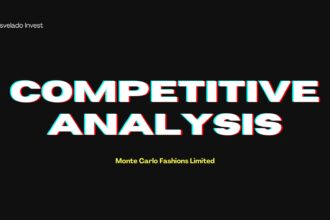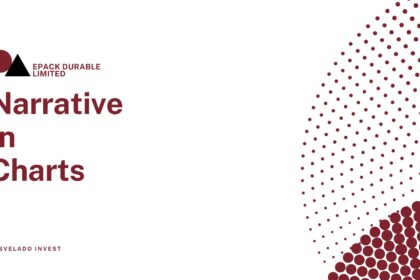Revenue (in cr)

• The strength of MCFL is the woolen portfolio under the Monte Carlo brand (28.4% of sales). Within its segment, this has an estimated 50% market share of the organized segment. Monte Carlo woolen sweaters command high gross margins and this segment is the main source of income for the company.
• The problem has been that the woollen business has been a dog in terms of growth (sub-20 % growth).
• The woolen portfolio is well-penetrated in the northern and eastern parts of the country and has a limited market in the warmer parts. It grows in the mid-single digits, at best.
Gross Margin

EBITDA Margin

MCFL makes healthy EBITDA margins of 14%, which are at the good end of the listed apparel peers. Despite lower gross margins, it makes good EBITDA margins due to the following factors:
1) Low rental costs as the bulk of the EBOs are franchised.
2) Staff costs as a percentage of sales are lower than industry standards (by 300-400bps). This is maybe a sign that not enough quality professional talent has been inducted. Directionally, staff costs have moved up 300 bps over the last six years.
Net Fixed Asset Turnover (times)

• MCFL has a fixed asset turnover of 3.2x, which is on the lower side versus industry peers. This is a bit surprising given it does not invest much in company EBOs. While they manufacture woolens in-house, cotton apparel is majorly outsourced.
• In that context, asset turnover seems lower than expected. For comparison, TCNS has asset turns of 2x (completely outsourced), KKCL has 7.3x (partially in-house) and Page has 9.3x (70% in-house).
Return on Capital Employed

• MCFL makes a core return on capital employed (ROCE) (post-tax) of 10%, which is much lower than other peers in the branded apparel business.
• While its margins are good, the lower fixed asset turnover and the stretched working capital cycle have dragged down its ROCE.
• ROCE is not acceptable as it is also higher than the cost of capital (10-11%) and the growth rate which allows MCFL to grow with internal accruals.
• The company has managed to keep its overall working capital steady by increasing payable days to the same effect (70 to 100+). Since 25-30% of payables are to group entities, the pain has been managed well. Peer KKCL, which has also suffered from rising receivable days, has not been able to stretch its payable cycle because all its vendors are independent with no related party involved.
• The company has remained debt-free (long term) and closed FY24 with net cash of ₹72 million.







